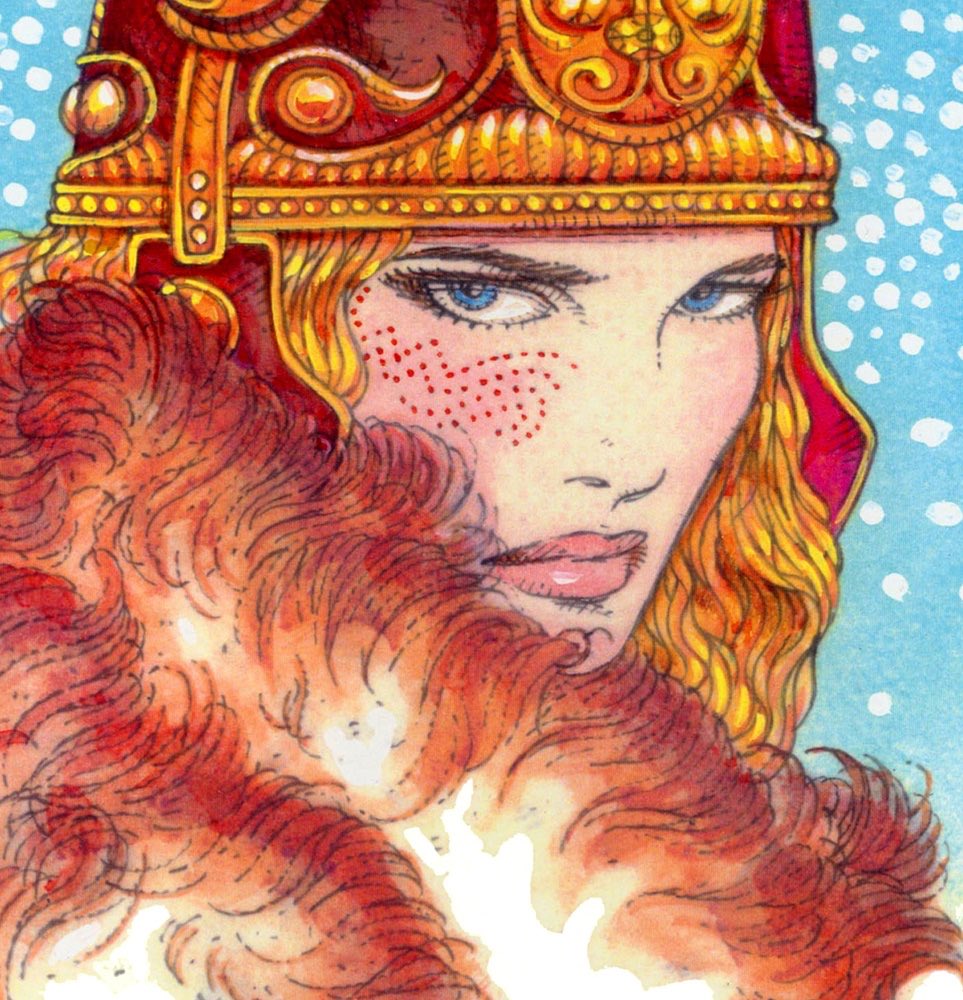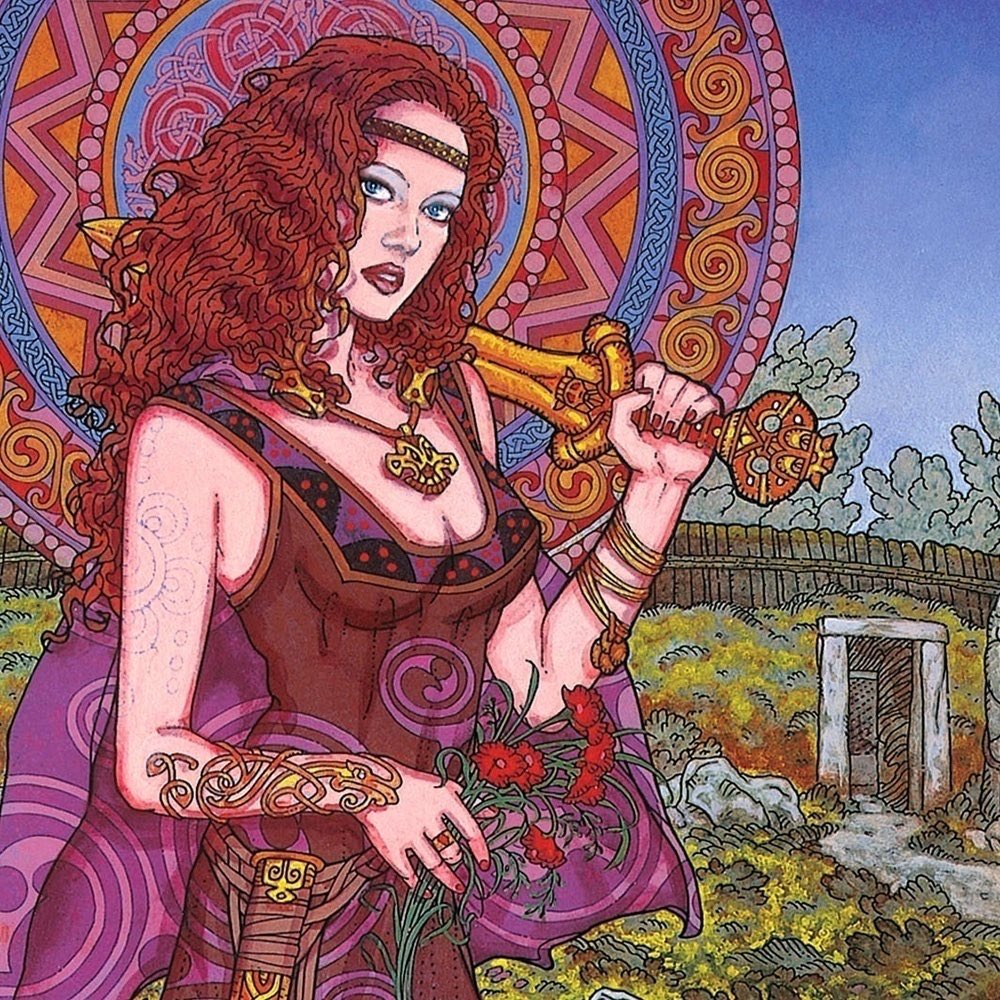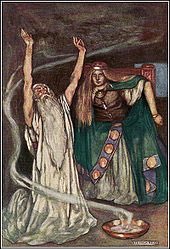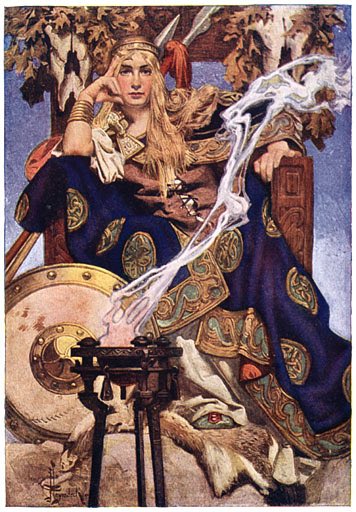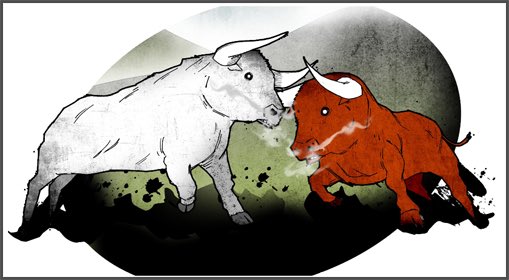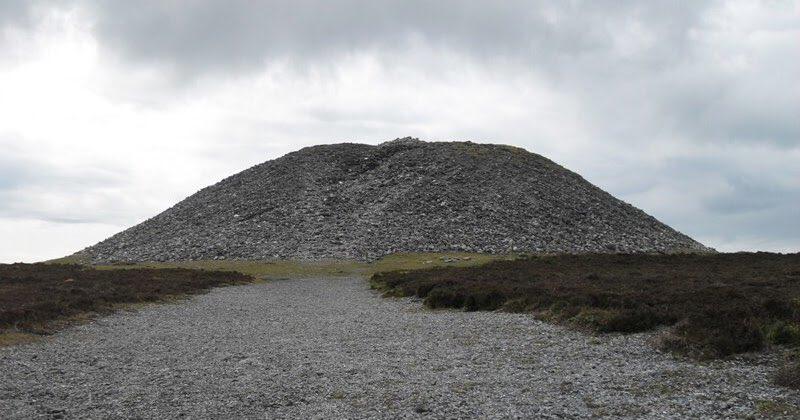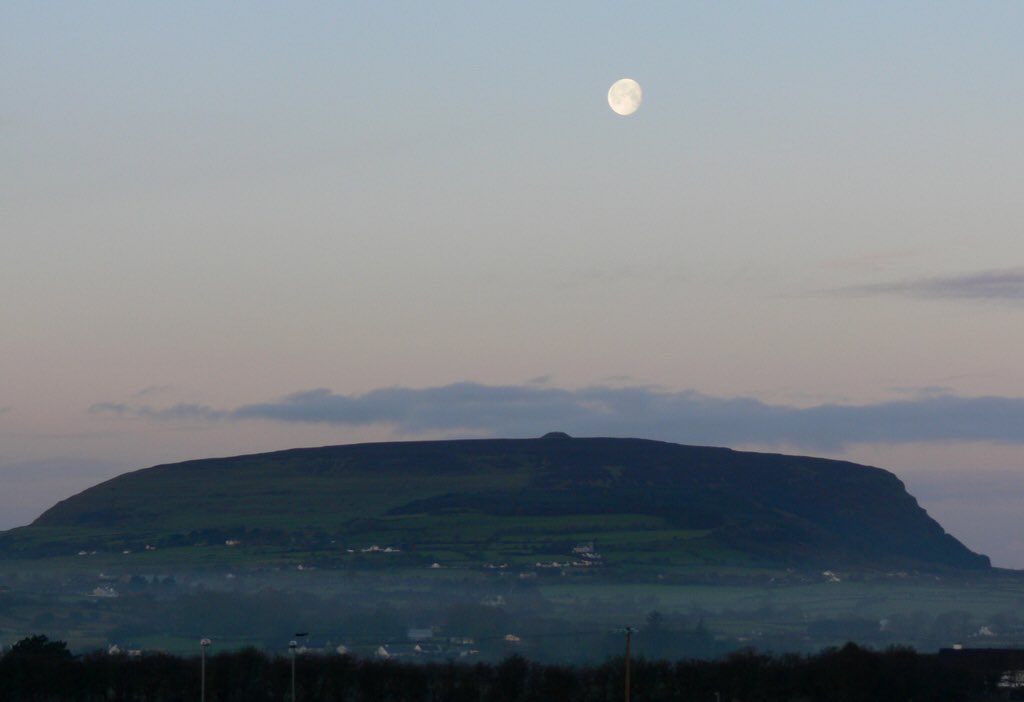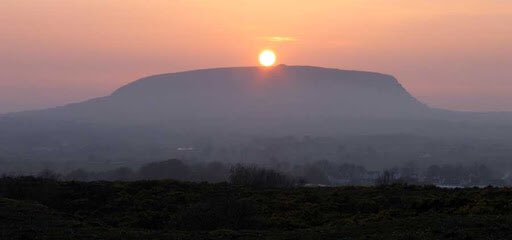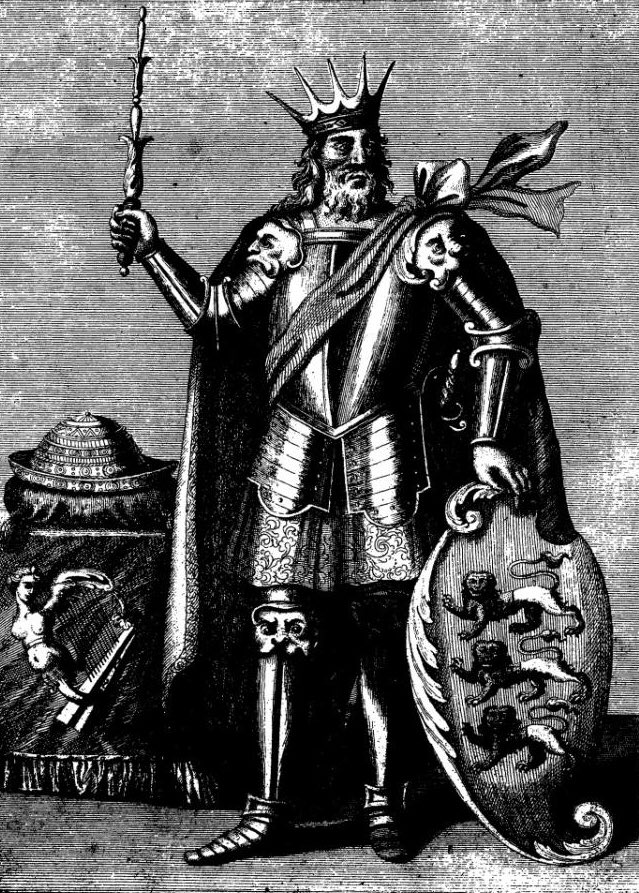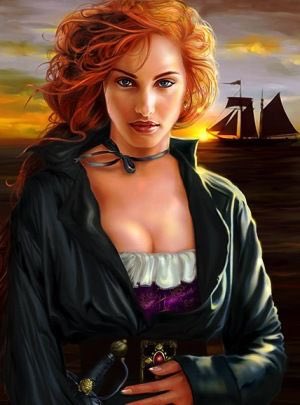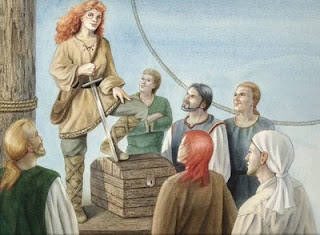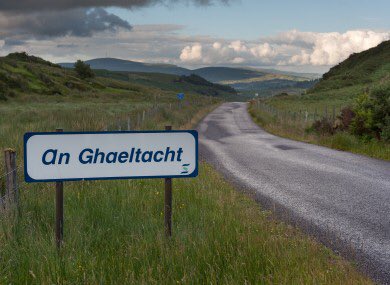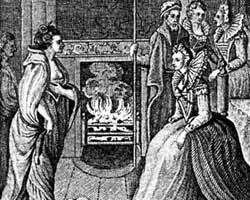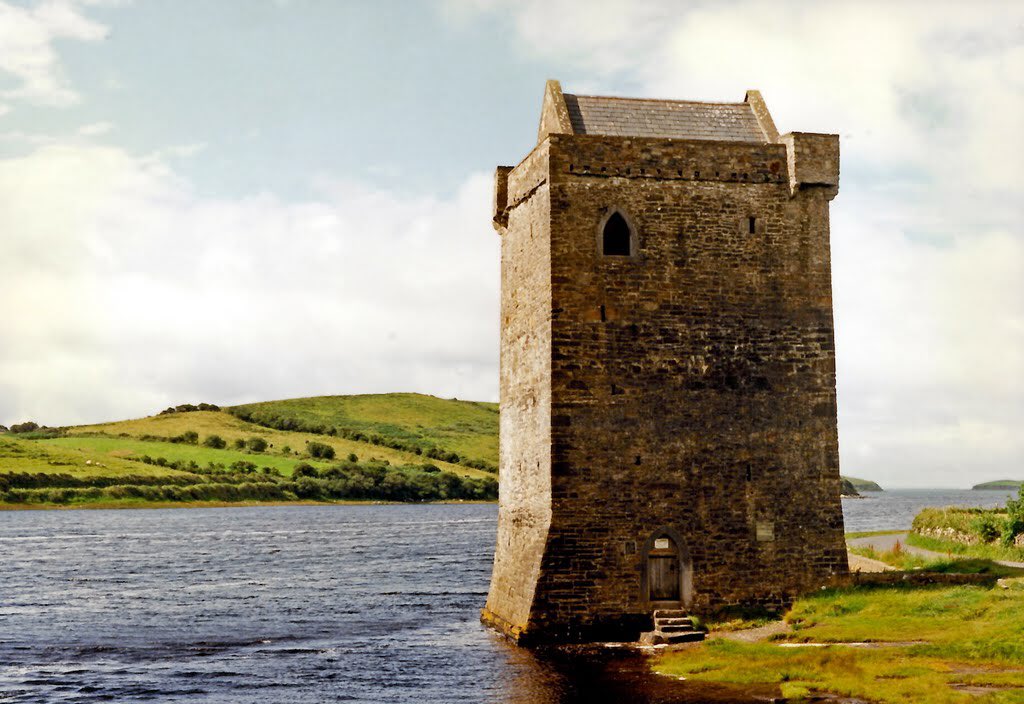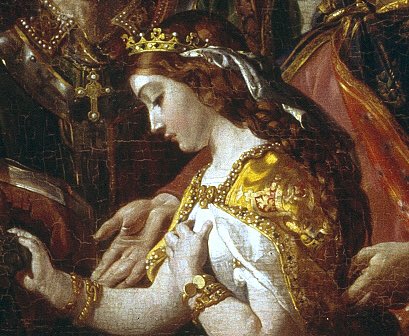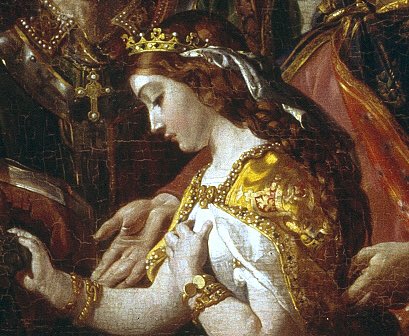Thread of 5 Irish Queens:
1. Queen Maeve: Maeve or Medb, the old Irish spelling, came to power in Connacht when she got married to Ailill mac Máta. She had several husbands before him who were also kings of Connacht.
Queen Medb was known as the warrior queen of Connacht; she is most famed for battling it out at the Cattle Raid of the Cooley. She was born in Rathcroghan, in Irish Ráth Cruachan, County Roscommon.
In many legendary stories, Maeve is described as a goddess and valiant queen, but in other tales, she is described as being feisty and difficult. It is said she was strong-willed, ambitious, cunning and promiscuous, and is an archetypal warrior queen-
she is described as a fair haired wolf queen, whose form was so beautiful that it robbed men of two-thirds of their valor upon seeing her.
It is believed that Maeve was killed at a later battle in Ulster. The unlikely yet amusing part of this story is that she was killed by a slingshot that bore a single piece of cheese. According to legend, she is buried in Miosgán Médhbh-
in a 12 m high stone monument on the summit of Knocknarea in County Sligo. She is supposedly buried upright facing her enemies in Ulster.
Gormlaith was the daughter of Murchad mac Finn, a king of Leinster of the Uí Fhaelain line. She was born in Naas, County Kildare, in 960 AD, her first marriage was to Óláfr Sigtryggsson, Norse king of Dublin and York, with whom she had a son, Sitric Silkbeard.
She also married the Irish king Brian Boru in 997 AD and had a son, Donnchadh. Boru was an enemy of Gormlaith’s son Sitric, having fought in several battles with him. Their marriage was short-lived and Gormlaith was believed to be in opposition to Brian since separating from him.
The battle took place on Good Friday in 1014 and resulted in a victory for Brian’s forces, but ultimately the death of Brian in a tent near the battlefield.
Historians have said that she was a very beautiful woman, but her best qualities were those over which she had no control, and it was commonly said that her character was evil insofar as she had control over it.
It is documented that Gormlaith lived up until 1030.
It is documented that Gormlaith lived up until 1030.
Born in 1530 to an Irish chieftain of the Ó Máille family in Connacht known as “Pirate Queen” as she is famously known, was the first queen of Ireland to have an audience with the Queen of England Elizabeth I. She was willing to defend the people of Connacht against English rule.
Upon her father’s death she took over active leadership of the lordship by land and sea, despite having a brother, Ní Mháille went on to protect Connacht from English rule. In the process of doing so,
she was punished by Sir Richard Bingham, an Englishman sent to govern over this part of Ireland.
The British Crown has in its possession letters detailing correspondence between Gráinne and Queen Elizabeth I. The letters show a plea Gráinne made to the queen about her situation with Bingham.
It is believed that the queen showed a lot of admiration for Gráinne and agreed to lift some of the sanctions made by Bingham.
Gráinne only spoke Irish like and these fierce pirate clans dominated the sea and viciously taxed anyone who tried to trade on their patch. They spoke only Irish and refused to ever speak English, a tradition held to this day in the Gaeltacht areas of Ireland.
As Gráinne only spoke Irish, she also refused to speak English when she later met Queen Elizabeth I in 1593, they had to converse in Latin.
Gráinne Ní Mháille is said to have died in 1603 at Rockfleet Castle in County Mayo. She spent much of her life protecting Connacht from enemies and encroaching English rule.
From her strongholds of Clare Island and Clew Bay, Gráinne was able to use her piracy and seafaring ways to protect the west of Ireland for a considerable amount of time.
was born in 1145. Known as “Eva of Leinster” to historians, Aoife Nic Mhurchadha was the daughter of the King of Leinster, Diarmaid Mac Murchadha, and the wife of Richard de Clare, more commonly known as Strongbow.
She came to power following the death of her father. When her husband Strongbow was appointed as King of Leinster, Aoife logically became his queen.
She earned a reputation and is remembered for being a scholarly, wise and capable warrior, leading troops into several battles as queen. As a young woman,-
she lived many years following the death of Strongbow in 1176, and devoted herself to raising their children and defending their territory. She died in 1188.
Máel Muire Ingen Amlaíb was the daughter of Gormlaith, also an iconic queen in her own right, and Óláfr Sigtryggsson who was King of Dublin and previously King of York
It is uncertain as to where Máel Muire would have been born but it is likely to have been in the vicinity of Dublin, where her father held his throne in late 900AD.
She is famed as the first known queen of Norse descent and the first Queen of Ireland of ultimately foreign or non-Gaelic lineage historically known to be.
Máel married Máel Sechnaill mac Domnaill, King of Mide (Meath) & High King of Ireland, in late 900 AD. Her mother (Gormlaith) is also rumored to have been married to mac Domnaill. He was eventually overthrown by Boru but since Boru was not recognized, he was High King until 1002.
Máel Muire is said to have died in 1021, a year before her husband Máel Sechnaill mac Domnaill.

 Read on Twitter
Read on Twitter